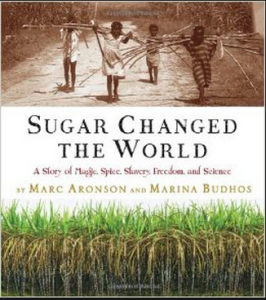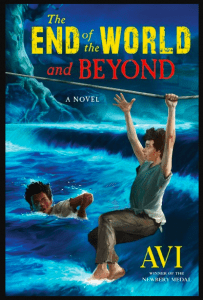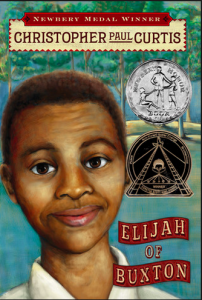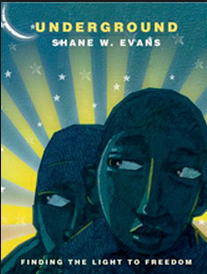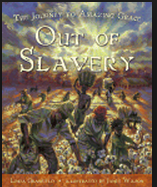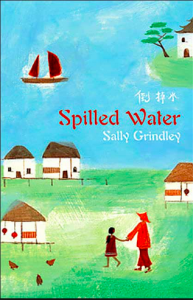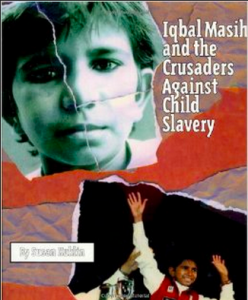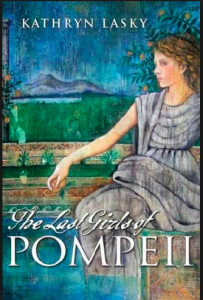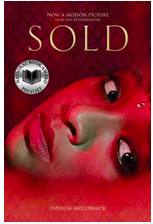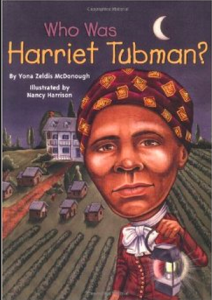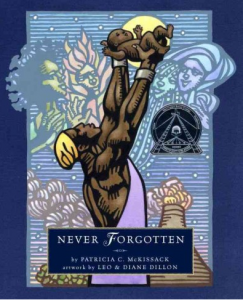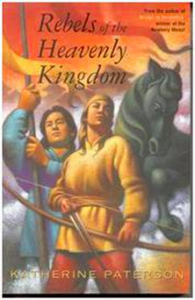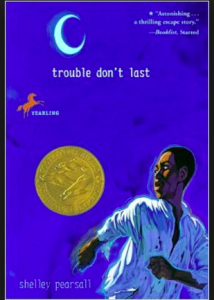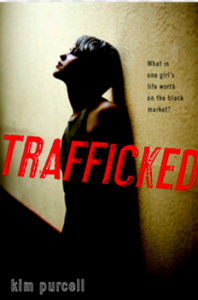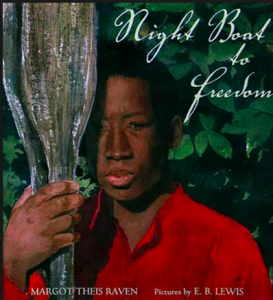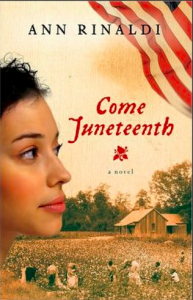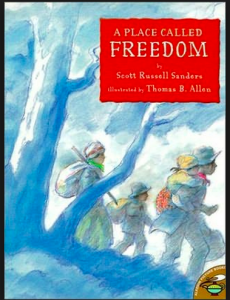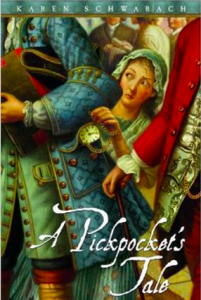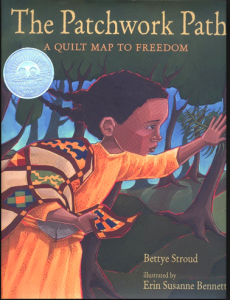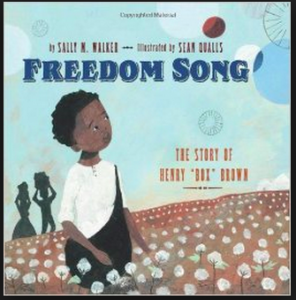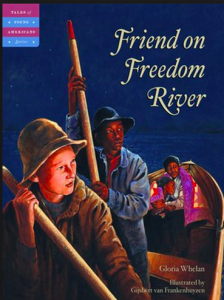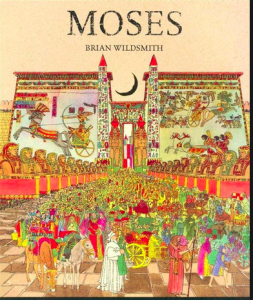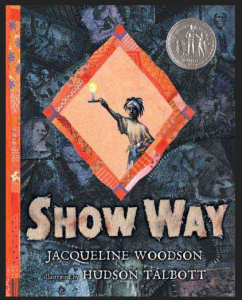Aronson, Marc and Marina Budhos. Sugar Changed the World : a Story of Magic, Spice, Slavery, Freedom, and Science. Boston: Clarion Books, 2010.
“Songs, oral histories, maps, and more than eighty archival illustrations help trace the history of sugar and the sugar trade.” – CIP. Winner of multiple awards. Highly recommended for readers and researchers 12-years-old and up. Useful as a class set.
Avi. The End of the World and Beyond: Continues The Unexpected Life of Oliver Cromwell Pitts: Being an Absolutely Accurate Autobiographical Account of my Follies, Fortune & Fate Written by Himself. Chapel Hill, North Carolina: Algonquin Young Readers, 2019.
In this sequel to The Unexpected Life of Oliver Cromwell Pitts, twelve-year-old Oliver suffers the horrors of transport from England to America in 1724 before being sold into servitude to a violent man and set to work with a black slave in the fields outside the town of Annapolis. How will Oliver survive? Will he escape? Will he ever be reunited with his sister and father? Full of historical details, this action-packed novel will appeal to readers whether or not they have read the previous novel.
Curtis, Christopher Paul. Elijah of Buxton. Toronto: Scholastic Canada, 2007.
“In 1859, eleven-year-old Elijah Freeman, the first free-born child in Buxton, Canada, which is a haven for slaves fleeing the American South, uses his wits and skills to try to bring to justice the lying preacher who has stolen money that was to be used to buy a family’s freedom.” – Baker & Taylor. Winner of multiple awards, including the Newbery Medal and the Canadian Library Association Book of the Year for Children, this novel is recommended for readers 11-years-old and up.
Durango, Julia. The Walls of Cartagena. New York : Simon & Schuster Books for Young Readers, 2008.
“Thirteen-year-old Calepino, an African slave in the seventeenth-century Caribbean city of Cartagena, works as a translator for a Jesuit priest who tends to newly-arrived slaves and, after working for a Jewish doctor in a leper colony and helping an Angolan boy and his mother escape, he realizes his true calling.” – CIP. A novel recommended for readers 11-years-old and up but especially valuable for readers studying the effects of the Age of Discovery.
Evans, Shane W. Underground. New York: Roaring Brook Press, 2011.
“A pivotal moment in American history is shared with young readers by following a slave family’s escape to the North by crawling on the ground, running barefoot through the woods, sleeping beneath bushes and eventually reaching freedom.” – Baker & Taylor. A picture book highly recommended as a read-aloud: read the very brief story aloud without showing the book; discuss inferences and connections; read the story again so that listeners can see the illustrations; discuss the power of pictures to tell a story. [Abolitionists; Runaways; Slavery; Underground Railroad]
Gann, Marjorie. Five Thousand Years of Slavery. Toronto: Tundra Books, 2011.
This book “provides the suspense and emotional engagement of a great novel. It is an excellent resource with its comprehensive historical narrative, firsthand accounts, maps, archival photos, paintings and posters, an index, and suggestions for further reading. Much more than a reference work, it is a brilliant exploration of the worst – and the best – in human society.” – Random House, Inc. Recommended for readers and researchers 12-years-old and up. (306.36209 Gan)
Granfield, Linda. Out of Slavery : the Journey to Amazing Grace. Plattsburgh: Tundra Books of Northern New York, 2009.
“John Newton, a seafaring slave trader, is caught in a storm and prays for salvation, promising to turn his back on the slave trade if he is spared, and when his prayers are answered, he keeps his word and becomes an abolitionist while also writing hymns.” – CIP. A picture book biography recommended for readers 11-years-old and up.
Grindley, Sally. Spilled Water. London: Bloomsbury, 2004.
“When Lu Si-Yan’s father dies and her mother suffers a breakdown, her selfish, old-fashioned Uncle sells her to the wealthy Chen family as a servant. Barely 12 and inexperienced, Lu Si-Yan’s slave-labor is recognized as illegal by the Chen grandmother, who gives her money and helps her leave. After the money is stolen, the girl’s naïve innocence lets her fall into the trap of factory life, complete with unfair labor practices, compulsory overtime, withheld wages in a prison-like setting that offers room and board for unbearably long work days and nights.” – CIP. Recommended for readers 12-years-old and up.
Kuklin, Susan. Iqbal Masih and the Crusaders Against Child Slavery. New York: Henry Holt, 1998.
“An account of the former Pakistani child labor activist whose life and unexplained murder has brought to the attention of the world the evil of child bondage.” – CIP. A biography for readers 11-years-old and up.
Lasky, Kathryn. The Last Girls of Pompeii. New York: Viking, 2007.
“Twelve-year-old Julia knows that her physical deformity will keep her from a normal life, but counts on the continuing friendship of her life-long slave, Mitka, until they learn that both of their futures in first-century Pompeii are about to change for the worse.” – CIP. A rare novel about Roman times featuring a female main character and bit of romance. Recommended for readers 11-years-old and up.
McCormick, Patricia. Sold. New York : Hyperion, 2015, c2006.
“Thirteen-year-old Lakshmi leaves her poor mountain home in Nepal thinking that she is to work in the city as a maid only to find that she has been sold into the sex slave trade in India and that there is no hope of escape.” – CIP. A powerful story, recommended only for mature readers 13-years-old and up.
McDonough, Yona Zeldis. Who Was Harriet Tubman? New York: Grosset & Dunlap, 2002.
“A biography of Harriet Tubman, the nineteenth-century woman who escaped slavery in the American South and helped many other slaves get to freedom on the Underground Railroad.” – CIP. Part of a highly recommended series of biographies for readers 9-years-old and up.
McKissack, Patricia C. Never Forgotten. New York: Schwartz & Wade Books, 2011.
“In eighteenth-century West Africa, a boy raised by his blacksmith father and the Mother Elements–Wind, Fire, Water, and Earth–is captured and taken to America as a slave.” – CIP. A picture book written in verse by an award winning author and illustrated by Caldecott winners Leo and Diane Dillon. Recommended for readers 10 years old and up.
Paterson, Katherine. Rebels of the Heavenly Kingdom. Toronto: Groundwood Books/House of Anansi Press, 2008.
“Abducted from his home by bandits, fifteen-year-old Wang Lee is rescued from slavery by a mysterious girl who introduces him to the Taiping Tienkuo, a secret society partly based on Christian principles and dedicated to the overthrow of the Manchu government.” – CIP. For competent readers 11-years-old and up.
Paulsen, Gary. Nightjohn. New York : Bantam Doubleday Dell Books for Young Readers, [1995], c1993.
“Twelve-year-old Sarny’s brutal life as a slave becomes even more dangerous when a newly arrived slave offers to teach her how to read.” – CIP. A short, less well-known novel by a highly acclaimed author. Recommended for readers 11-years-old and up.
Pearsall, Shelley. Trouble Don’t Last. New York: Knopf, 2002.
“Samuel, an eleven-year-old Kentucky slave, and Harrison, the elderly slave who helped raise him, attempt to escape to Canada via the Underground Railroad.” – CIP. A highly recommended novel for readers 11-years-old and up with an afterword explaining the historical background. [African Americans; Fugitive slaves; Old age; Runaways; Underground railroad]
Purcell, Kim. Trafficked. New York: Viking, 2012.
“A seventeen-year-old Moldovan girl whose parents have been killed is brought to the United States to work as a slave for a family in Los Angeles.” – CIP. A vivid story that will appeal to readers 14-years-old and up. [Human trafficking; Illegal immigration; Los Angeles; Civil unrest; Orphans; Criminal organization; Courage; Slavery]
Raven, Margot Theis. Night Boat to Freedom. New York: Farrar, Straus and Giroux, 2006. New York : Farrar, Straus and Giroux, 2006.
“At the request of his fellow slave Granny Judith, Christmas John risks his life to take runaways across a river from Kentucky to Ohio. Based on slave narratives recorded in the 1930s.” – CIP. A picture book recommended for readers 9-years-old and up. [Fugitive slaves; Slavery; Underground Railroad]
Rhodes, Jewell Parker. Sugar. New York : Little, Brown, 2013.
“In 1870, Reconstruction brings big changes to the Louisiana sugar plantation where spunky ten-year-old Sugar has always lived, including her friendship with Billy, the son of her former master, and the arrival of workmen from China.” – CIP. Showing the effects of slavery, this novel is recommended for readers 10-years-old and up. [African Americans; Chinese Americans; Courage; Friendship; Historical fiction; Individuality; Louisiana; Orphans; Race relations; Racism]
Rinaldi, Ann. Come Juneteenth. Orlando: Harcourt, 2007.
“Fourteen-year-old Luli and her family face tragedy after failing to tell their slaves that President Lincoln’s Emancipation Proclamation made them free.” – CIP. Recommended for readers 11-years-old to 15-years-old. [African Americans; Secrets; Slavery; Texas – History]
Sanders, Scott Russell. A Place Called Freedom. New York: Atheneum Books for Young Readers, 1997.
“After being set free from slavery in 1832, young James Starman and his family journey from Tennessee to Indiana to start a new life and over the years they are joined by so many blacks that they start their own town.” – CIP. A picture book for readers eight-years-old and up.
Schwabach, Karen. A Pickpocket’s Tale. New York: Random House, 2006.
“When Molly, a ten-year-old orphan, is arrested for picking pockets in London in 1731, she is banished to America and serves as an indentured servant for a New York City family that expects her to follow their Jewish traditions.” – CIP. Recommended for readers 11 to 15-years-old. [New York (City); Orphans; Slavery; Judaism; Jews]
Stroud, Bettye. The Patchwork Path : A Quilt Map to Freedom. Cambridge, Mass.: Candlewick Press, 2005.
“While her father leads her toward Canada and away from the plantation where they have been slaves, a young girl thinks of the quilt her mother used to teach her a code that will help guide them to freedom.” – CIP. A picture book for readers nine-years-old and up.
Vaughan, Marcia K. Up the Learning Tree. New York : Lee & Low Books, 2003.
“A young slave boy risks his life to learn how to read and, with the unsuspecting help of a teacher from the North, begins to realize his dream.” – CIP. A picture book for readers 8-years-old and up.
Walker, Sally M. Freedom Song: The story of Henry ‘Box’ Brown. New York: Harper, 2012.
“Henry Brown copes with slavery by singing, but after his wife and children are sold away he is left with only his freedom song, which gives him strength when friends put him in a box and mail him to a free state.” – CIP. A picture book for readers 10-years-old and up. [Singing; Slavery; Underground Railroad]
Whelan, Gloria. Friend on Freedom River. Chelsea, MI: Sleeping Bear Press, 2004.
“On a cold December night, Louis must decide whether to brave the treacherous Detroit River to take a slave family to freedom.” – CIP. [Courage; Fugitive slaves; Slavery; Underground Railroad]
Wildsmith, Brian. Moses. Oxford, UK: Oxford University Press, 1998.
“The story of how one man, called Moses, led his people out of slavery to a land that God had promised to give them.” – CIP. A highly recommended picture book by an outstanding storyteller and artist. The story is also published with the same cover but the title Exodus.
Woodson, Jacqueline. Show Way. New York: G. P. Putnam’s Sons, 2005.
“The making of “Show ways,” or quilts which once served as secret maps for freedom-seeking slaves, is a tradition passed from mother to daughter in the author’s family.” – CIP. A picture book for readers 9-years-old and up.
“In Show Way, Soonie’s great-grandmother was sold when she was 7 to be a slave without being paid because she was a black person. She sewed a quilt that showed maps to freedom, to a place where there was no slavery. Even now, when there’s no slavery, Soonie’s family makes family tree quilts which show the family from generation to generation. The author, Jacqueline Woodson, created a very excellent book that makes readers wonder if Soonie’s great-grandmother is ever going to get to the freedom place without being caught. The book is also excellent because it is filled with historical facts about the civil war and slavery.” –Gwilim
See also books about people of African heritage.
